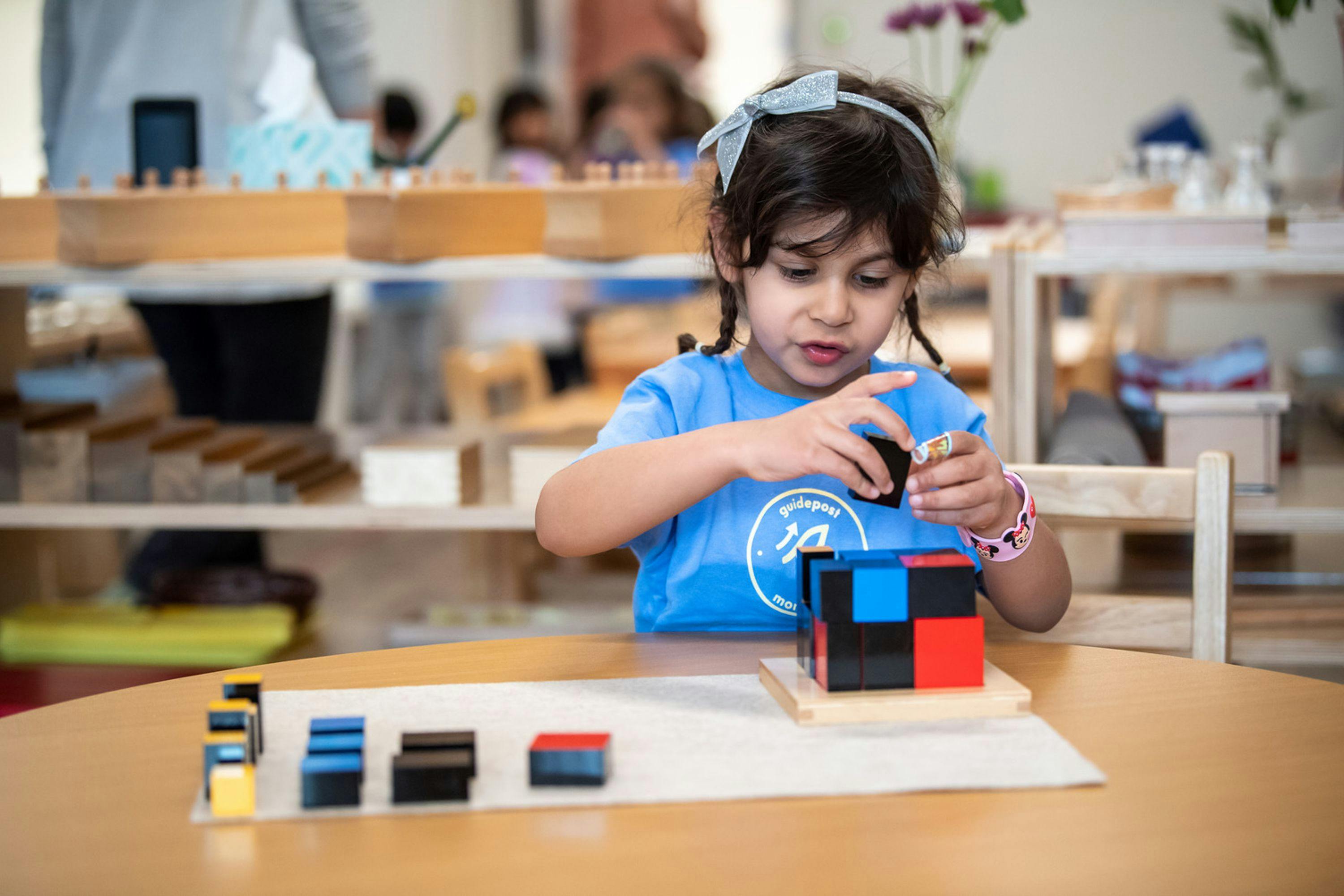What is the Sensorial Area of the Classroom?
In this post, we take a deeper look into what is meant by the term "Sensorial" in Montessori
The Guidepost Team
There are five main areas of the Montessori classroom: Practical Life, Sensorial, Math, Language, and Cultural Studies.
Math and language make sense, but what's "Sensorial" all about? Let's take a deeper look at what children can learn in this particular area of the classroom and how you can relate some of the same principles to life outside the classroom.
All of the activities you'll find in the Sensorial area help a child train one of their five senses: touch, sight, smell, taste, or hearing. Anyone who has observed a young child putting just about everything in their mouths understands how much children learn through their senses!
Let's look at each sense individually and examine how the Sensorial materials help children explore their world.
Touch
There's an activity called the Fabric Boxes in Sensorial that epitomizes the development of the sense of touch. The box contains squares of fabrics of different weaves or fibers. The child has to find the matching pair, typically with a blindfold on! By carefully rubbing a piece of wool between two fingers, for example, then feeling a piece of cotton, the child is honing their sense of touch without the added distraction of sight. At home, place many different fabrics in your child's environment. Speak about how soft or how prickly some fabrics are, and encourage feeling a fabric between thumb and pointer finger!
Sight
You'll often hear teachers speak about a child developing visual discrimination, and the Sensorial materials help to do just that. Take the Pink Tower for example. It's a relatively simple set of building blocks, but while building, children learn to visually discriminate the dimensions of one block as compared to another. When built correctly, the tower ranges from the largest block at 10cm cubed to the smallest, only 1cm cubed. At home, help your child learn visual discrimination by making simple "smaller" or "larger" comparisons.
Smell
The olfactory sense, or sense of smell, is delightful to explore with children. Smells are associated with memory, like fresh-baked cookies or fall leaves, and other smells, like the smell of a skunk or bleach, alert us to danger. In the Sensorial area, you'll find Smelling Bottles that act much the same as the Fabric or Sound Boxes. There are two sets of jars with cotton balls moistened with a certain scent, and the child's job is to find the matching scent pair. At home, you can explore scent in the kitchen by isolating spices in small dishes and smelling them, or perhaps even setting up your own matching game. Make observations about scents outdoors as well, "Do you smell that lilac bush? Wow, so pungent!"
Taste
This might seem like a difficult sense to explore in the classroom, but the Sensorial area includes Tasting Jars with flavors like salty, sweet, bitter and sour. Teacher and student taste the flavors by dropping a few drops onto a clean spoon. Once again, they attempt to match flavors from two identical sets of bottles! In most of these Sensorial activities you'll notice that only one sense is developed at a time. This is called "isolation of difficulty". It allows a child to practice one new skill at a time without distraction or confusion. At home, try isolating flavors and making a game out of tasting. For example, mix a little lemon juice and water to taste, or salt and water, or sugar and water! See what you like best.
Hearing
A fun activity for children that hones hearing is the Sound Boxes. Like the Fabric Boxes, this is a matching activity. There are two sets of tubes, some marked red and some marked blue, that contain identical filler materials like sand or rocks. The child needs to shake one red tube, then find the matching sound in the set of blue tubes! The small distinction in sounds when shaken is quite hard to hear, but children soon master this activity and delight in their ability to match the tubes! At home, set up a similar activity using plastic easter eggs, or even up-cycled water bottles. Make a blindfold so your child can't see what's inside the bottles!
The Sensorial area of the classroom is literally a feast for the senses. No matter what type of educational setting your child is currently enrolled in, remember there are plenty of ways you can encourage exploration of the world through the senses at home! Get creative, and follow your child's interests.
The Guidepost Team
The Guidepost Team is a group of writers and educators dedicated to helping demystify all things Montessori.
Sign up for our newsletter
Get started with our community today! Sign up for resources.
